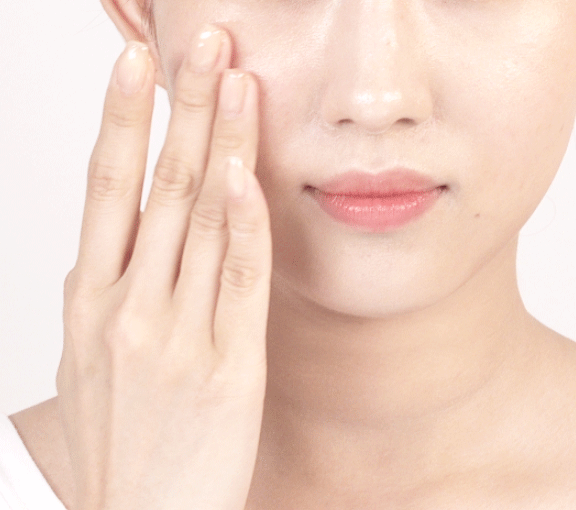Everyone’s talking about polyglutamic acid, and while this skincare ingredient holds a lot of promise, it’s not going to replace hyaluronic acid any time soon. Here’s why.
Every time a new skincare ingredient hits the market, it brings me back to watching Survivor or American Idol back in middle school where one person needs to win and everyone gets sent home with nothing. There’s this eternal struggle to find the “best” ingredients, and it’s honestly getting overwhelming at this point. I have some feelings that I need to get off my chest about this false sense of scarcity and FOMO that’s being used to push excessive consumerism, but that’s for another day. I specifically wanted to talk about polyglutamic acid, all the buzz it’s been getting lately, and why I’m not going to swap hyaluronic acid out of my routine for polyglutamic acid, or PGA.
PGA has popped up in some products that I’ve become familiar with recently (the Steambase Roseherb Build line, Mediheal NMF cleansing foam and sheet mask, and the Keep Cool Soothe Bamboo Toner, to name a few), and with the Inkey List launching a dedicated PGA serum, I don’t see this new kid on the block going anywhere soon.

So what the heck is polyglutamic acid?
Polyglutamic acid definitely won’t win any awards for sounding particularly glamorous, but it falls into the humectant category. It doesn’t function to exfoliate your skin the way glycolic or lacti acid does, which I’ve seen some articles online falsely claim. It hydrates your skin by binding water to your skin. It’s produced via fermentation in labs and also occurs in natto, which is a traditional Japanese food comprised of fermented soy beans, so if fermented ingredients are something you love, rejoice. However, if you need to avoid them due to any skin conditions you may have, definitely ask your derm before using it.
What does PGA do?
PGA is chemically considered a protein, and much like hyaluronic acid, it also is naturally occurring within your skin, so it falls right in line with the philosophy of “help your skin do what it does” that I’ve really been sticking to lately. What makes it different is that, according to studies, PGA can hold more water than hyaluronic acid can. You always hear that hyaluronic acid can hold 1,000 times its weight in water, and apparently PGA can hold five times that. Obviously that won’t translate exactly on to your skin, but the point is, it can pack a punch when it comes to hydration.

PGA can apparently help your skin not break down hyaluronic acid as quickly, regardless of whether it’s naturally occurring or topically applied, meaning it can help your hydration last longer. Longer lasting hydration means we can better avoid the appearance and, more importantly, in my opinion, the feeling of dehydrated skin. There’s literally nothing worse for me than that tight, dry feeling that happens when my skin is losing water; I swear I can hear my skin screaming at me.
There’s also some research that PGA can help aid in preventing and treating hyperpigmentation, but I couldn’t find anything substantial to back that up other than quotes from random dermatologists in various articles, so take that as you will. What it all boils down to is that there’s a lot of promise here for what PGA could do for our skin.
Polyglutamic acid vs. hyaluronic acid
However, PGA is a chunkier molecule than hyaluronic acid, so it doesn’t have the potential to sink as deeply into the skin as hyaluronic acid can. With “multiple weights of hyaluronic acid” being an extremely trendy marketing thing right now, the inability to penetrate into deeper layers of skin might seem like a negative, but the fact that PGA is a bigger molecule could be beneficial.

Sitting in the upper portion of your skin means that PGA will help give that classic “glass skin” type of look. The surface hydration is what aids in making your skin look dewy and plump, which can minimize the appearance (and I mean just the appearance, y’all) of fine lines and pores. I really appreciate this type of effect because I’ve found that keeping my skin full of hydration actually does make my pores look less apparent, which is a battle I will be fighting for the rest of my life.
These different qualities actually makes PGA quite a great companion to hyaluronic acid, which is why I was irritated that my initial research into this ingredient turned up so many articles talking about how PGA is going to give hyaluronic acid a “run for its money” or that hyaluronic acid can “move over,” implying that PGA is superior because it has the potential to hold more water. Even the articles making these statements acknowledge that PGA is not a direct replacement for hyaluronic acid, but actually discuss how the two could potentially work very well together, which I am in full agreement with, so the fact that they’re making these “PGA > HA” statements in both their content and even in their titles really is incredibly annoying.
I’m actually quite intrigued by the early research on PGA, and I expect it to creep its way into more hydrating toners and serums during the upcoming year despite being not so thrilled with how some corners of the internet are choosing to discuss it. My message to you is this: PGA could be great, so give it a try if you get the chance, consult a derm if you have skin conditions that can make fermented ingredients difficult to tolerate, and make sure you read the whole article, not just the headline, because sometimes they literally disagree with each other. I promise that won’t happen here.
Have you tried polyglutamic acid yet? Are you interested in checking it out?
Loading...